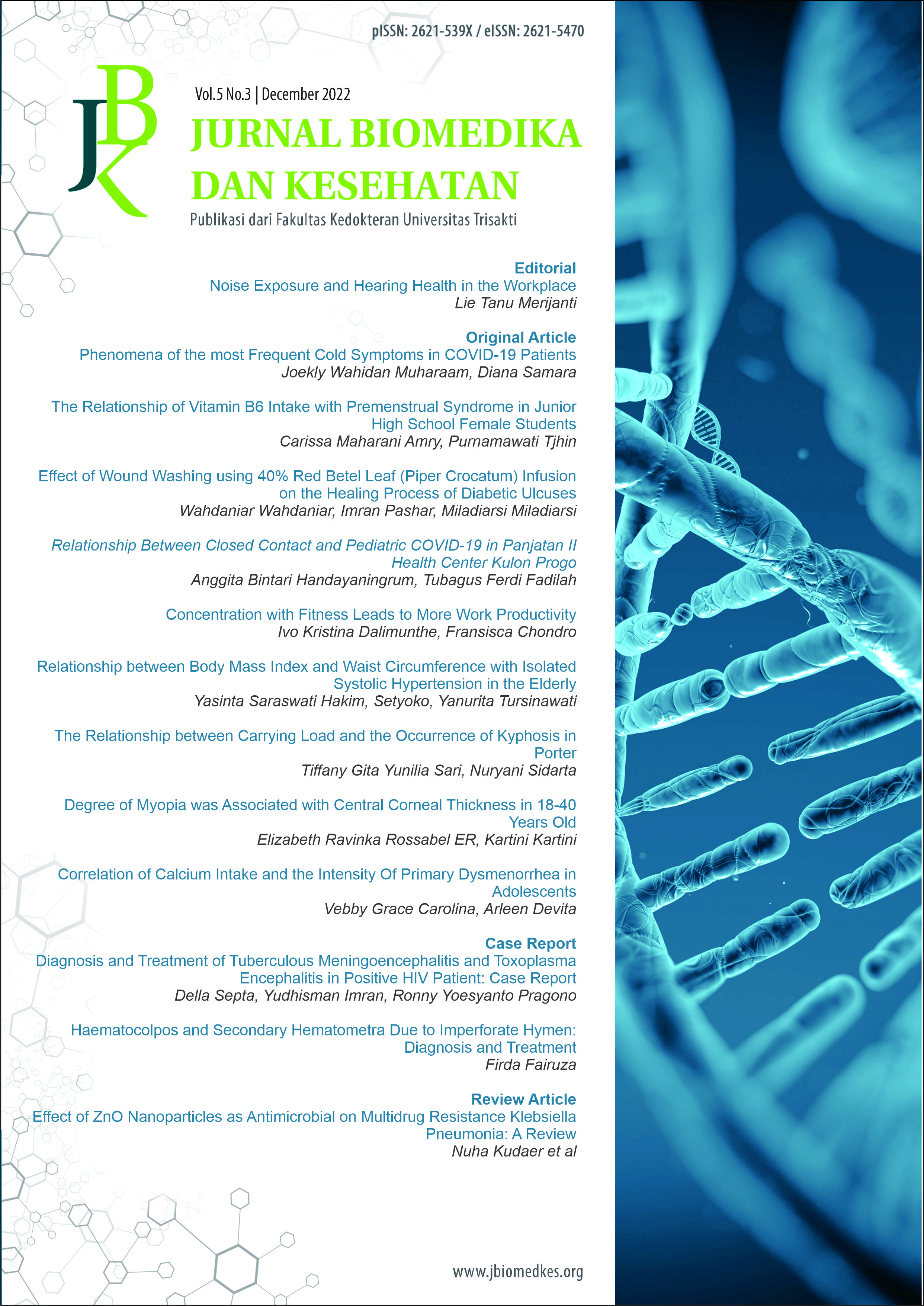The Relationship of Vitamin B6 Intake with Premenstrual Syndrome in Junior High School Female Students
DOI:
https://doi.org/10.18051/JBiomedKes.2022.v5.144-152Keywords:
Vitamin B6, Age, Menarche age, Body Mass Index (BMI), Premenstrual syndromeAbstract
Background
Many women complain of uncomfortable symptoms a few days before menstruation in the form of
emotional problems to discomfort in the abdominal area, this condition is called premenstrual
syndrome. Lack of nutrients, one of which is vitamin B6, is a risk factor for premenstrual syndrome.
This study was conducted to assess the relationship between vitamin B6 intake and premenstrual
syndrome in junior high school students.
Methods
The study used an analytical observational method with a cross-sectional design, in 162 students of
SMPN 75 Jakarta, which was taken with cluster random sampling and simple random sampling
techniques. Measurement of the incidence of premenstrual syndrome was carried out using sPAF
questionnaires and vitamin B6 intake using SQ-FFQ questionnaires. The data from the study were
analyzed using the chi-square test. The research was conducted after obtaining the approval of the
number ethics 7/KER-FK/II/2022.
Results
The results showed that female students who experienced premenstrual syndrome were mostly aged
15-16 years (20.8%), had menarche at the age of under 12 years (16.4%), did less exercise (15.6%), had a
body mass index (BMI) in the category of excess nutrition (25.0%), and consumed foods that
contained enough vitamin B6 (15.0%). The results of the bivariate analysis between free and
dependent variables found no meaningful relationship between premenstrual syndrome and age (p
= 0.054), menarche age (p = 0.630), exercise (p = 0.726), BMI (p = 0.131), and vitamin B6 intake (p =
1.000).
Conclusions
There was no relationship between vitamin B6 intake, sociodemographic characteristics (age,
menarche age), exercise, and body mass index (BMI) and premenstrual syndrome.
Downloads
Downloads
Published
How to Cite
Issue
Section
License
Copyright (c) 2022 Carissa Maharani Amry, Purnamawati Tjhin

This work is licensed under a Creative Commons Attribution-NonCommercial 4.0 International License.
The journal allow the authors to hold the copyright without restrictions and allow the authors to retain publishing rights without restrictions.

